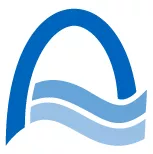The outstanding event of the past year was certainly the beginning of the routine operation of FRM II. After having completed the nuclear commissioning in 2004 the Bavarian regulator gave the permission for routine operation of the FRM II on April 22. As a consequence the Technische Universität München took over the FRM II from the general contractor Siemens/Framatome ANP on April 25 , 2005. Many thanks to the stuff of Siemens/Framatome ANP which has built a safe and extremely powerful neutron source. At the same time the general contractor was released from his nuclear co-responsibility, which went over exclusively into the hands of the Technische Universität München up from this date. Immediately the 2nd fuel element was put into the core position. On Tuesday, May 2 FRM II reached its nominal power of 20 MW and the first neutrons were delivered to the users. All together FRM II operated for 3 full cycles in 2005. The 52 days rhythm for each cycle was only interrupted for a short period, among others due to two extremely strong thunderstorms, which interrupted the current supply in the region around Garching. The regular maintenance interval after the 3rd cycle was finished in due time. At the very end of 2005 the 5th fuel element was loaded into the core in order to start the 5th cycle on January 5, 2006.
The neutron fluxes at the instruments are fulfilling more than our expectations. The neutron beams which come from the cold source through the neutron guides to the positions at the instruments have been characterized in great detail. Some of them are the most intensive ones world wide. By the end of 2005, 14 beam instruments were in operation. We expect 5 further instruments to start routine operation in 2006. 278 proposals were submitted in 2 proposal rounds in 2005. Overbooking of the beam time is a factor of about 2 in the average. About 32 % of the beam request came from research groups outside of Germany.
The silicon doping, the pneumatic rabbit system and other irradiation facilities are routinely serving our industrial clients. They differ from each other by a very pure thermal neutron spectrum and suppression of fast neutron flux by factors between 103 - 105. Single crystalline silicon rods of a diameter of 20 cm and 50 cm in height show the demanded homogeneous doping needed by the semiconductor industry. Industry although booked experimental time at beam instruments like the strain scanner StressSPEC and the radiography station ANTARES. The Centre for Industrial Applications (IAZ) welcomed its 1st lodger in 2005. Offices and laboratories will be used for the production of radio pharmaceuticals.
Furthermore FRM II participated at the open house day on the Garching campus last year. As usual a maximum of 500 visitors were guided through the nuclear and experimental facilities.
In June 2005 the construction work for the combined experimental and office building housing for the FZ-Jülich outstation was started. In early January 2006 the 1800 m2 large base concrete plate was cast at a Bavarian winter temperature around –10 °C. The first occupants are expected to move in during December 2006. This building was also in the centre of a dispute with our antagonists. The association “Bürger gegen Atomreaktor Garching” accused FRM II of drilling illegal holes into the reactor outer wall in order to feed particle beams into the new experimental hall. In late December, during a trip to the location the major of Garching and the members of city parliament convinced themselves that all of these accusals would withstand a verification.
Prof. Schreckenbach became successor of the project manager Dr. Axmann in 2002, finished the construction and started the FRM II successfully. In December 31, 2005 ended the term of Prof. Klaus Schreckenbach as Technical Director of FRM II. Routinely he handed over the steering wheel to Dr. Ingo Neuhaus. Dr. Ingo Neuhaus has studied Mechanical and Nuclear Engineering at the RWTH Aachen, received his PhD for studying plutonium reduction by using thorium based fuel in PWR, took responsibility for the nuclear operation of the Jülich heavy water research reactor.
Guido Engelke Winfried Petry Klaus Schreckenbach
